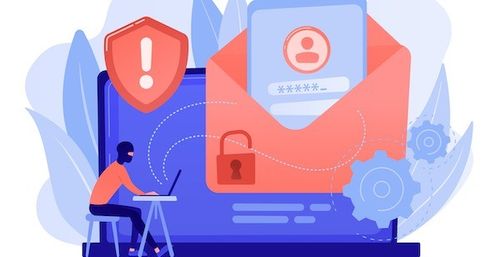As a seasoned cybersecurity expert, I understand the critical importance of securing online platforms and protecting user data. Email verification is a fundamental component of user authentication and security. However, it's disheartening to acknowledge that email verification bypass vulnerabilities pose a significant threat to online security. In this comprehensive guide, we will delve deep into the world of email verification bypass vulnerabilities, explore real-world cases, understand their impact, and most importantly, learn how to safeguard your online platforms from such threats.
The Significance of Email Verification
Before we dive into the complexities of email verification bypass vulnerabilities, it's essential to grasp the significance of email verification in online security:
User Authentication: Email verification is a crucial step in confirming the identity of users during registration or account recovery processes.
Data Integrity: It ensures that user data, including email addresses, is accurate and belongs to the rightful owners, reducing the risk of fraudulent activities.
Communication: Verified email addresses serve as a reliable means of communication between online platforms and users, allowing for notifications, updates, and password recovery.
Now, let's unravel the alarming world of email verification bypass vulnerabilities.
Understanding Email Verification Bypass Vulnerabilities
Email verification bypass vulnerabilities occur when malicious actors find weaknesses in the email verification process, allowing them to bypass this critical security checkpoint. Here's how these vulnerabilities can manifest:
1. Incomplete Verification Checks
- In some cases, online platforms may fail to perform thorough verification checks, allowing users to register or recover accounts with unverified email addresses.
2. Predictable Verification Codes
- Weak algorithms or predictable patterns in generating verification codes can be exploited by attackers to guess or generate valid codes, bypassing the verification step.
3. Client-Side Manipulation
- Malicious users may manipulate client-side scripts or intercept requests to modify the verification process, rendering it ineffective.
4. Timing Attacks
- Timing attacks involve carefully timed requests to exploit vulnerabilities in the verification process, allowing attackers to proceed without a valid email confirmation.
Real-World Cases of Email Verification Bypass Vulnerabilities
To understand the severity of email verification bypass vulnerabilities, let's explore some real-world cases:
Case 1: Bypassing Email Verification of a High-Profile Tech Company
- In this case, an ethical hacker discovered a flaw in the email verification process of a renowned tech company, allowing users to register without confirming their email addresses. This could have serious implications if exploited maliciously.
Case 2: A Curious Case - From Little to Complete Email Verification Bypass
- A security enthusiast uncovered a series of vulnerabilities in an online platform that led to complete email verification bypass. This highlights the need for comprehensive security assessments.
Case 3: Email Verification Bypass in SAP e-Recruiting
- This case demonstrates a vulnerability found in SAP e-Recruiting, where attackers could bypass email verification and potentially access sensitive recruitment data.
The Impact of Email Verification Bypass Vulnerabilities
The consequences of email verification bypass vulnerabilities can be far-reaching:
Unauthorized Access: Attackers can gain unauthorized access to user accounts, potentially compromising personal information.
Data Breaches: Sensitive data stored on the platform, including user profiles and communication records, can be exposed.
Reputation Damage: The reputation of the affected organization can suffer, leading to loss of trust among users and stakeholders.
Protecting Against Email Verification Bypass Vulnerabilities
Now that we understand the risks associated with email verification bypass vulnerabilities, it's crucial to explore preventive measures:
1. Robust Verification Algorithms
- Implement robust and unpredictable algorithms for generating verification codes to make it difficult for attackers to guess or generate valid codes.
2. Regular Security Audits
- Conduct regular security audits and vulnerability assessments to identify and address weaknesses in the email verification process.
3. Client-Side Security
- Ensure that client-side scripts are secure and cannot be manipulated to bypass email verification.
4. Rate Limiting and Timing Protections
- Implement rate limiting and timing protections to thwart timing attacks by malicious users.
5. User Education
- Educate users about the importance of email verification and encourage them to report any suspicious activity.
Frequently Asked Questions (FAQs)
Q1: How can I test my platform for email verification bypass vulnerabilities?
A1: Consider engaging ethical hackers or security experts to conduct penetration testing and security assessments
to identify and address vulnerabilities.
Q2: What should I do if I discover an email verification bypass vulnerability in my platform?
A2: Act immediately to patch the vulnerability and notify affected users if necessary. Conduct a thorough security review to prevent future incidents.
Q3: Are there tools available to help prevent email verification bypass vulnerabilities?
A3: Yes, there are security tools and frameworks available that can help identify and mitigate email verification bypass vulnerabilities.
Q4: Can multi-factor authentication (MFA) help mitigate these vulnerabilities?
A4: Yes, implementing MFA can add an extra layer of security, making it more challenging for attackers to bypass email verification.
Q5: What legal consequences can an organization face if email verification bypass vulnerabilities lead to data breaches?
A5: Depending on the jurisdiction and the nature of the breach, organizations may face legal consequences, including fines and damage to their reputation.
Conclusion
Email verification bypass vulnerabilities are a serious threat to online security and data integrity. By understanding the risks, learning from real-world cases, and implementing robust security measures, you can protect your online platforms and user data from malicious actors. Online security is an ongoing commitment, and staying vigilant is key to maintaining the trust of your users and stakeholders.



